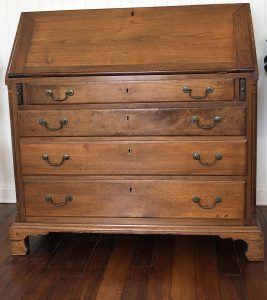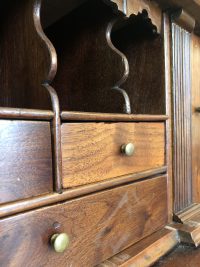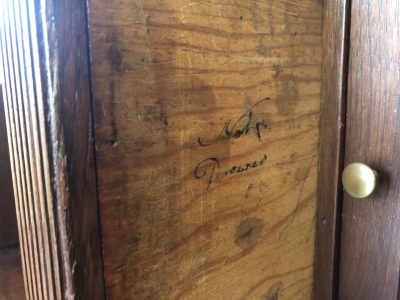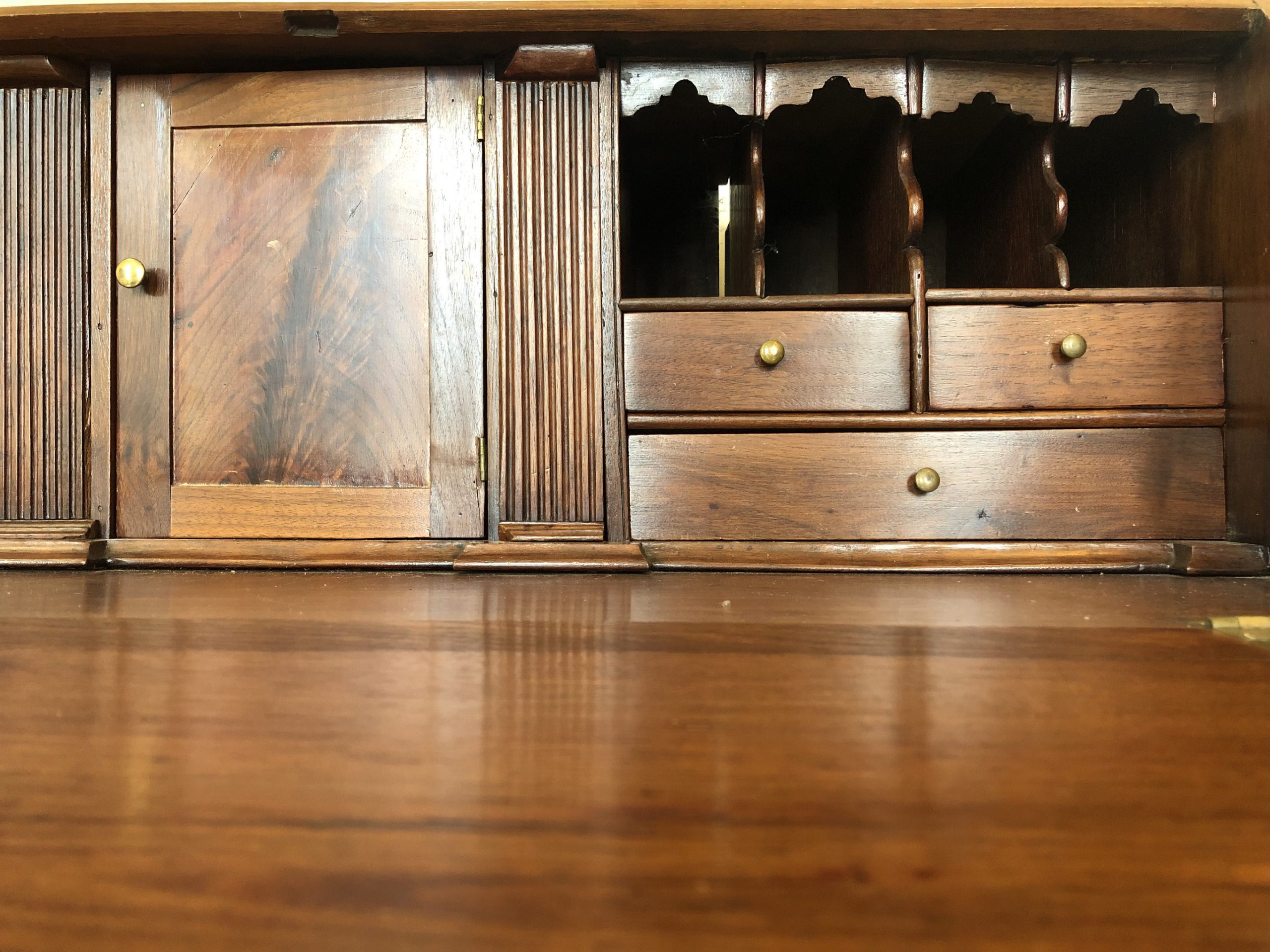C. 1812 desk donated to the Waterford Foundation

The Waterford Foundation recently became the proud exhibitors of an American walnut slant-top desk, believed to have been made in Leesburg, Virginia, about 1812, for Samuel Gover (born before 1765 in Maryland, died between 1822-26 in Waterford). The donation was made by Gover descendant and Highland, Maryland residents Margaret Rose and her husband Gerald on October 21, 2016 at the Waterford Corner Store. Co-archivists Bronwen Souders and Edith Crockett accepted it on behalf of the Foundation.
A member of Fairfax Monthly Meeting of the Society of Friends (Quakers), Gover headed a household of seven individuals in 1810 in the village (although 14 children in all had been born to hi and his second wife Sarah Harris Janney between 1
785 and 1806). Their home, now called the Griffith-Gover House, is at 40139 Main Street. The desk was handed down through the family to Samuel’s great grandson Henry Taylor Gover (1875-1969), and through Henry’s niece Mary Armstrong Pierdon to her daughter Margaret Rose.
An appraisal report for the piece gives the following details:
The classic form, with few embellishments and no veneers, is in keeping with Quaker tastes, comprising a set of four graduated drawers with toe-molded overlapping edges; the shallowest drawer is on top, flanked by sliding supports for the writing surface; the desk compartment is symmetrically arranged around a central cabinet with crotch-grained prospect door, with a fluted-front document box to either side, then three small drawers show beneath valanced pigeon holes; decorative flued quarter columns are on the front corners. It is supported on bracket feet; overall measurements are 41 inches high; 41 3/4 inches wide, and 21 inches in depth.
The primary wood appears to be walnut; drawers and hidden surfaces in the case constructed of poplar; drawer guides are yellow pine or hemlock; drawers and hidden surfaces in the desk compartment, white pine. Escutcheons and locks appear to be original. Bale pulls are of the period but do not appear to be original with the desk.
Wear, cracks and repairs are consistent with age and use, most notably along the top edge of two drawers and the front left foot. Some pigeonhole valances are detached, but retained. The wood surface has been polished and refinished during years of domestic use.


If you have artifacts from Waterford’s history that you would like to share, please contact our office at oldschool@waterfordfoundation.org.
